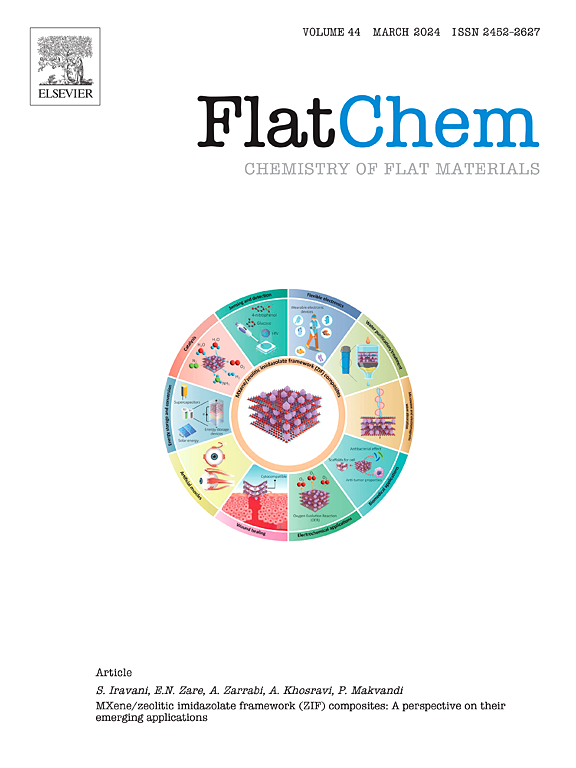Metal-organic framework on graphene derived hierarchical carbon supported tin dioxide nanocomposite for superior lithium ion storage
IF 6.2
3区 材料科学
Q2 CHEMISTRY, PHYSICAL
引用次数: 0
Abstract
Tin dioxide (SnO2) based anode material is investigated as an alternative choice to current graphite counterpart for lithium-ion batteries. Effective dispersing SnO2 nanocrystals in a rationally designed carbon matrix with distinctive microstructures is critical for the enhancement of the electrochemical performances. Herein, 1,3,5-benzenetricarboxylic acid (C9H6O6, H3BTC) based 1D metal–organic framework (MOF) material Sn-BTC and tea polyphenol (TP) modified 2D reduced graphene oxide (RGO) samples are firstly prepared, which are further employed to engineer a Sn-BTC/TP-RGO precursor with unique microstructures in a mild hydrothermal condition. Finally, the Sn-BTC/TP-RGO can be directly converted the hierarchical SnO2/C/RGO sample, in which SnO2 nanocrystals are well dispersed by the 1D pyrolytic carbon and 2D RGO skeleton after a thermal treatment. Critical challenges of MOF degradation, inhomogeneous distribution of SnO2 nanocrystals and over reassembly of the RGO layers are well addressed. The SnO2/C/RGO nanocomposite shows superior lithium ion storage behaviors than the controlled samples in half-cell, which has a high specific capacity of 780.03 mAh·g−1 over 200 cycles at a low-density current of 200 mA·g−1, a stable capacity of about 698.27 mAh·g−1 over 1000 cycles at a high-density current of 1000 mA·g−1. Moreover, the full-cell performance and the lithium ion storage mechanism of the SnO2/C/RGO sample are studied.

石墨烯上的金属有机框架--衍生分层碳支撑二氧化锡纳米复合材料--用于卓越的锂离子存储
二氧化锡(SnO2)负极材料是锂离子电池中石墨负极材料的替代选择。在合理设计的具有独特微观结构的碳基质中有效分散二氧化锡纳米晶体对于提高电化学性能至关重要。本文首先制备了1,3,5-苯三羧酸(C9H6O6,H3BTC)基一维金属有机框架(MOF)材料Sn-BTC和茶多酚(TP)修饰的二维还原氧化石墨烯(RGO)样品,并进一步在温和的水热条件下设计出具有独特微观结构的Sn-BTC/TP-RGO前驱体。最后,经过热处理,Sn-BTC/TP-RGO 可直接转化为分层 SnO2/C/RGO 样品,其中 SnO2 纳米晶体被一维热解碳和二维 RGO 骨架很好地分散。该样品很好地解决了 MOF 降解、SnO2 纳米晶体分布不均匀和 RGO 层过度重组等关键难题。与对照样品相比,SnO2/C/RGO 纳米复合材料在半电池中显示出更优越的锂离子存储性能,在 200 mA-g-1 的低密度电流下循环 200 次,比容量高达 780.03 mAh-g-1;在 1000 mA-g-1 的高密度电流下循环 1000 次,比容量稳定在 698.27 mAh-g-1。此外,还研究了 SnO2/C/RGO 样品的全电池性能和锂离子存储机理。
本文章由计算机程序翻译,如有差异,请以英文原文为准。
求助全文
约1分钟内获得全文
求助全文
来源期刊

FlatChem
Multiple-
CiteScore
8.40
自引率
6.50%
发文量
104
审稿时长
26 days
期刊介绍:
FlatChem - Chemistry of Flat Materials, a new voice in the community, publishes original and significant, cutting-edge research related to the chemistry of graphene and related 2D & layered materials. The overall aim of the journal is to combine the chemistry and applications of these materials, where the submission of communications, full papers, and concepts should contain chemistry in a materials context, which can be both experimental and/or theoretical. In addition to original research articles, FlatChem also offers reviews, minireviews, highlights and perspectives on the future of this research area with the scientific leaders in fields related to Flat Materials. Topics of interest include, but are not limited to, the following: -Design, synthesis, applications and investigation of graphene, graphene related materials and other 2D & layered materials (for example Silicene, Germanene, Phosphorene, MXenes, Boron nitride, Transition metal dichalcogenides) -Characterization of these materials using all forms of spectroscopy and microscopy techniques -Chemical modification or functionalization and dispersion of these materials, as well as interactions with other materials -Exploring the surface chemistry of these materials for applications in: Sensors or detectors in electrochemical/Lab on a Chip devices, Composite materials, Membranes, Environment technology, Catalysis for energy storage and conversion (for example fuel cells, supercapacitors, batteries, hydrogen storage), Biomedical technology (drug delivery, biosensing, bioimaging)
 求助内容:
求助内容: 应助结果提醒方式:
应助结果提醒方式:


